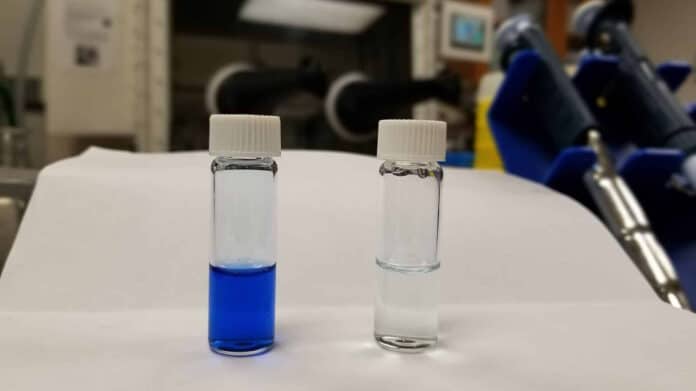Water pollution has been a significant challenge for the environment and human health. Dyes in water resources cause severe water pollution and block sunlight penetration through water, which impairs the photosynthesis of aquatic plants as well as causes a significant alteration in ecological conditions of aquatic life. If these contaminants aren’t properly removed from wastewater after dyeing and finishing, they can be a significant source of environmental pollution and pose risks to human health.
North Carolina State University researchers have developed a synthetic polymer that is capable of removing certain dyes from contaminated water. Also, the polymer can be cleaned up and reused to treat more wastewater.
In the study, the team created a nitrogen-rich polymer, polycarbodiimide, that efficiently removed anionic dyes from a dye-contaminated acidic solution. In the tests, the polymer was first dissolved in a solvent and then mixed with water contaminated with dyes. They tested the polymer solution against a series of 20 acid dyes, which are used in the textile industry.
For initial assessments, the researchers did a visual test with the naked eye to see if the polymer worked. They later quantified how well the polymer removed the colorant using UV-Vis spectroscopy.
“We mixed the polymer solution and dye-contaminated water so the polymer in the solution can grab onto the dye. This is a two-phase solution, just like oil and water. The polymer part of the solution grabs onto the dyes,” said Januka Budhathoki-Uprety, lead author of a paper on the work. “Then we were able to easily separate the clean water from the contaminated solution mixture by draining it out, similar to the separation of water from a mixture of oil and water.”
The polymer was successfully able to remove all but four of the 20 acid dyes they tested. In addition, they found it was easy to recover the polymer within minutes. They found characteristics of the dyes – related to their molecular structures – that contributed to whether the polymer worked or not.
In future studies, researchers are planning to develop a library of polymers that would have the potential to work with more types of dyes. In addition, they want to develop a more practical mechanism for using polycarbodiimide to clean wastewater.
“We are working to develop materials that can do the same work without having to use the polymer in the solution phase,” Budhathoki-Uprety said. “If you have dye spill, you don’t want to have to use a flammable solution – you want a solid material that is easier to handle.”
